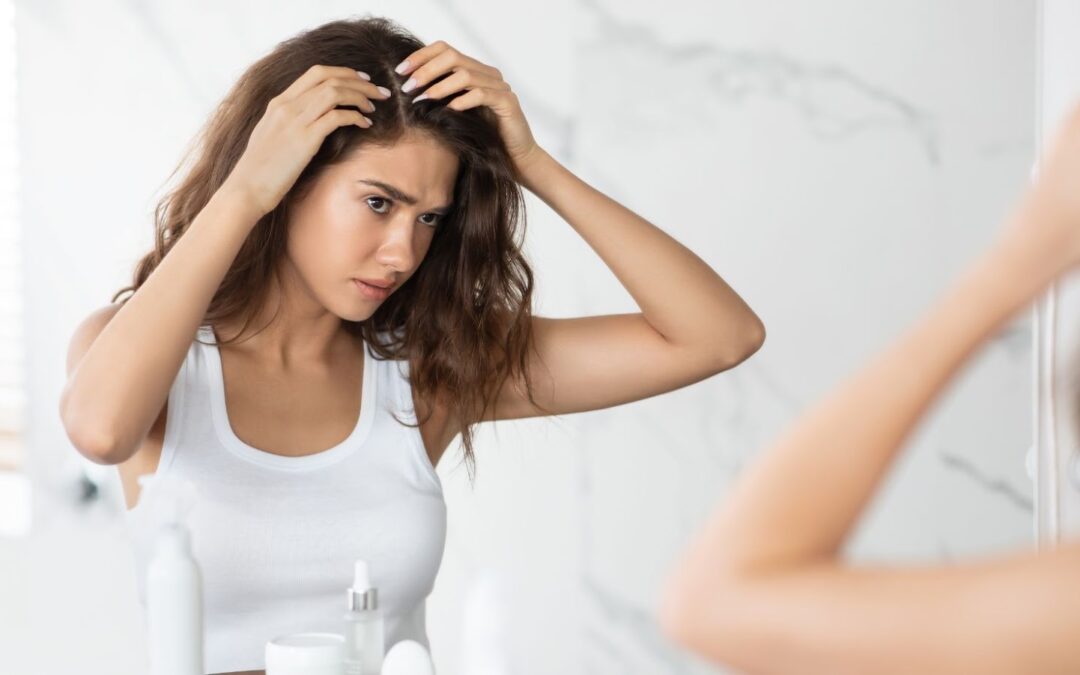Have you ever been plagued with the fear of getting lice? It is not uncommon for most people to assume that lice infestations only happen to children. However, that is not the case. Anyone can get lice, regardless of age or hygiene. So, if you are feeling itchy and suspect that lice could cause this, then learning how to check for lice on yourself is crucial.
Checking for lice on yourself can feel difficult, especially if you’ve never done it before. The good news is that it is fairly easy and can be done using simple steps. The first step is carefully inspect your scalp for any live lice crawling around. You can use a magnifying glass to make it easy to see and if you have trouble, have someone else take a look to help you out.
Once you have identified live lice or nits (lice eggs), you can proceed to the next step: use a fine-toothed comb to check for any lice and nits on your hair strands. By performing regular checks on yourself, you can easily identify any lice or nits in their early stages and avoid the frustration of a full-blown infestation. Keep reading to learn how to check for lice on yourself step-by-step.
For more interesting content see our next post!
How to Check for Lice on Yourself
As someone with experience with lice infestations, I know how frustrating it can be to try to diagnose the problem independently. But fear not, it’s not as challenging as you may think. Here are some steps that will help you to identify, check, and confirm if you have lice:
- Start with Good Lighting: Before you begin, finding an area well lighted enough to spot any lice is important. If possible, utilize natural light, giving you the best chance to spot any lice.
- Section your Hair: Part your hair into small sections and clip them up. This helps you inspect one area at a time, so you won’t miss any spots.
- Begin Inspection: Check your scalp thoroughly. Look for any signs of eggs (small, pale yellow or white-colored) attached to the hair shafts. Eggs are usually located near the scalp, but be sure to also inspect the length of your hair as lice may also lay their eggs there.
- Check for Live Lice: After checking for eggs, look for any signs of live lice. These will appear brownish, are small and move quickly. Pay extra attention to the nape of your neck and behind the ears since these tend to be the favorite hiding spots for lice.
- Repeat the Process: Check every section of your hair and scalp thoroughly, ensuring to cover all your hair, even if it is short.
- Confirm the Presence of Lice: If you find any lice or eggs, it’s essential to confirm it before taking action. Take some lens and put it on your phone’s camera light, which makes it more comfortable to see the eggs. You can buy a lice comb, which makes it easier to capture any lice, helping to confirm the diagnosis.
You can check and confirm if you have lice by following these simple steps. From there, it’s vital to eliminate the problem comprehensively. Remember to wash your hair with lice shampoo and comb through your hair regularly to eliminate any nits and eggs.

What to Do if You Find Lice on Yourself?
So, you’ve learned how to check for lice on yourself and have found some unwelcomed visitors. Don’t panic, follow these steps:
- Confirm It’s Lice: Before you treat lice, you need to make sure that it’s truly lice and not just dandruff, dirt, or any other debris. You can use a lice comb to remove the lice, look for eggs (called nits) attached to your hair, and check for any signs of itching.
- Treat Promptly: Once you’ve confirmed that it’s lice, the next step is to treat it promptly. Many different treatments are available, including over-the-counter shampoos, prescription medications, and natural remedies. Consult with your doctor to determine the best option for you.
- Clean Your Environment: Lice can spread easily, so cleaning your environment thoroughly is essential. Wash all bedding, clothing, and towels in hot water and dry them on a high heat setting. Vacuum carpets, furniture, and car seats, and put non-washable items into a sealed plastic bag for two weeks.
- Notify Others: Lastly, you must notify any individuals you’ve had close contact with. This includes family members, friends, and classmates. By informing them, they can take similar steps to prevent the spread of lice.
Remember, while lice infestations can be frustrating, they’re not dangerous, and with prompt treatment, you can get rid of them quickly and easily.
My name is Andrea Thompson and I’m a home based freelance writer. I’m 23 years old, married to my best friend, and mother to a wonderfully independent and opinionated 3 year old girl and step-mother to a sweet seven year old boy. I live in a tiny, little town in Kentucky, where I spend my free time fishing with my kids.
Writing has always been my passion, which I followed through high school, and for a while in college. Life happened, and once I discovered we were pregnant, I switched directions; opting for the healthcare industry because of the stability.
Finally, years later, I was in a place where I could leave the day job that never truly made me happy, and pursue my dreams. I’ve built, and am still building, my writing career from scratch. But, I’m passionate and I’m good at what I do. And, in the end, I can prove to my daughter that she can do anything she wants with this life.





